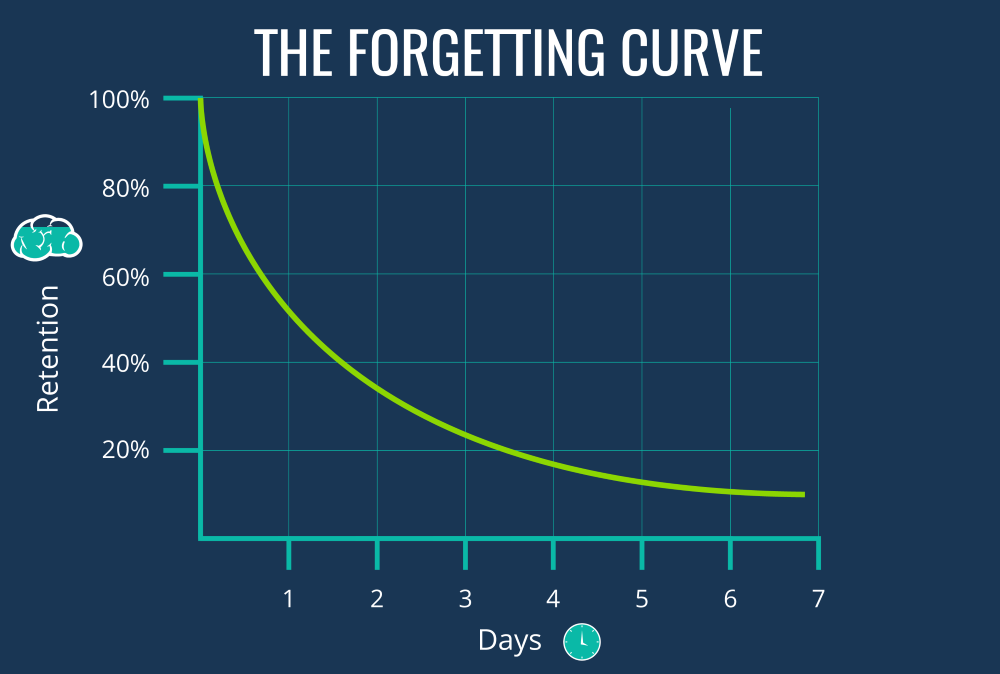1 min read
Most Staffing Firms are Not Built to Scale, But to Survive
Most staffing firms don’t struggle to scale because their teams aren’t working hard. They struggle because they don’t have a real go-to-market...
3 min read
![]() Dan Fisher
:
Oct 12, 2021 2:43:42 PM
Dan Fisher
:
Oct 12, 2021 2:43:42 PM

"I've explained this to him a hundred times. Why do I have to continue to repeat myself?"
"I remember we covered that in training but I don't recall the specifics."
Sound familiar? We’ve all had these kinds of experiences. The information is on the tip of your tongue, or the edge of your memory, but nearly impossible to recall, even though you heard or saw it just the other day. Or, you know you’ve read about a subject, but you just can’t remember the specific details.
You aren’t alone. Humans forget approximately 50 percent of new information they encounter within an hour and an average of 70 percent within 24 hours, cognitive science expert Art Kohn notes. After a week, he says, that average goes up to 90 percent.
This pattern is referred to as the Ebbinghaus’ forgetting curve, or simply 'the forgetting curve.' The forgetting curve demonstrates how information is lost over time when humans don’t try to retain it. If it wasn’t for the forgetting curve, your employees could simply take a training course once (or watch a top performer once) and it would stick forever. If only it were that easy!
As you will soon discover, understanding the forgetting curve and how to neutralize it is key to the success of any sales and recruiter enablement program. To begin, let's take a quick look at the video below to understand the history of the forgetting curve and Hermann Ebbinghaus's ground breaking research on memory loss.
Once he’d gathered all the data from his studies, he plotted the results on a graph that looked a little something like this:

The graph illustrates that when humans learn something new, the retention of that information disappears exponentially, i.e. you lose most of it in the first couple of days, after which the rate of memory loss tapers off.
After discovering the exponential decline of memory, Ebbinghaus identified the factors contributing to it. He discovered that the level of retention depends on three things:
Three Ways to Neutralize the Forgetting Curve

1 min read
Most staffing firms don’t struggle to scale because their teams aren’t working hard. They struggle because they don’t have a real go-to-market...

In my previous post, How to Prevent Unexpected Contract Terminations, I shared how systemizing consultant and client check-ins at key milestones...

About a year ago, I was serving as the fractional revenue leader, managing sales and recruiting for a client.